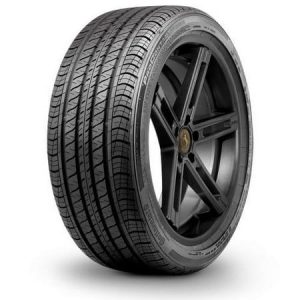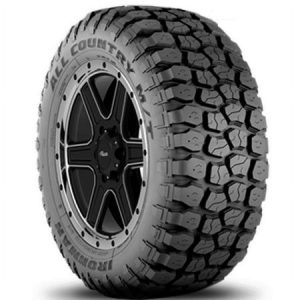Motorcycle tires are the sole point of contact between your machine and the road. They play a crucial role in handling, braking, and overall performance. However, unlike car tires, motorcycle tires experience a higher rate of wear and tear due to factors like aggressive riding styles and leaning. This can lead to imbalances, causing vibrations and affecting your motorcycle’s stability and safety. So, how often should you balance your motorcycle tires to maintain optimal performance and safety? This guide explores the key factors to consider when determining the ideal tire balancing frequency for your motorcycle.
Signs Your Motorcycle Tires Need Balancing
Several telltale signs indicate your motorcycle tires might be out of balance. Here’s what to watch out for:

-
Vibration: The most common symptom of imbalanced tires is a noticeable vibration in the handlebars or footpegs, especially at higher speeds. This vibration can be uncomfortable and make it difficult to maintain control of your motorcycle.
-
Uneven Tire Wear: Imbalanced tires can cause uneven wear patterns on the tread surface. This can manifest as scalloping on the edges or cupping in the center of the tread blocks. Uneven wear reduces tire lifespan and compromises handling.
-
Reduced Stability: Imbalanced tires can affect your motorcycle’s overall stability, making it feel wobbly or unpredictable, especially during braking or cornering. This can significantly reduce your confidence and enjoyment while riding.
If you experience any of these signs, it’s crucial to have your motorcycle tires balanced as soon as possible. Ignoring these issues can lead to premature tire wear, reduced safety, and a less enjoyable riding experience.
Frequency of Motorcycle Tire Balancing
There isn’t a one-size-fits-all answer to how often you should balance your motorcycle tires. The ideal frequency depends on several factors, including:

-
Riding Style: Aggressive riding habits like frequent hard braking, acceleration, and sharp leaning put more stress on your tires, increasing the likelihood of them becoming imbalanced. If you’re a spirited rider, consider balancing your tires more frequently.
-
Road Conditions: Rough roads with potholes and uneven surfaces can take a toll on your tire balance. If you frequently ride on less-than-ideal roads, consider more frequent balancing.
-
Tire Maintenance Practices: Proper tire maintenance practices, like maintaining correct inflation pressure and avoiding curbs, can help extend the time between balancing.
-
Manufacturer Recommendations: Consult your motorcycle’s owner’s manual for any specific recommendations from the manufacturer regarding tire balancing frequency.
Here’s a general guideline for how often to balance your motorcycle tires:
-
Every 3,000-5,000 miles (4,800-8,000 kilometers): This is a good starting point for most riders, especially those with moderate riding styles and good maintenance practices.
-
Every Tire Change: Whenever you install new tires, it’s essential to have them balanced as part of the installation process.
-
After Hitting a Pothole or Curb: Impacting a pothole or curb can disrupt your tire balance. If you experience a significant impact, have your tires balanced as a precaution.
-
Before a Long Trip: For peace of mind before an extended motorcycle journey, consider having your tires balanced to ensure a smooth and safe ride.
Remember, this is just a general guideline. It’s always best to be proactive and address any signs of imbalance promptly. If you’re unsure how often to balance your tires, consult with a qualified motorcycle mechanic. They can assess your riding style, motorcycle type, and riding conditions to recommend the ideal balancing frequency for your specific needs.
The Balancing Act: Benefits of Regularly Balancing Your Motorcycle Tires
Beyond the telltale signs and recommended frequency, understanding the benefits of regularly balancing your motorcycle tires can solidify its importance in your maintenance routine. Here’s a breakdown of the key advantages:

-
Enhanced Ride Quality: Balanced tires translate to a smoother and more comfortable riding experience. You’ll experience less vibration in the handlebars and footpegs, allowing you to focus on the road and enjoy the ride.
-
Improved Handling: Balanced tires contribute to sharper and more predictable handling. Your motorcycle will feel more stable and responsive, particularly during cornering and braking maneuvers, instilling confidence while navigating turns and tight spaces.
-
Extended Tire Life: Imbalanced tires wear unevenly, leading to premature replacement. Regular balancing helps ensure even wear across the tread surface, maximizing your tire lifespan and saving you money in the long run.
-
Reduced Stress on Motorcycle Components: Imbalanced tires can cause excessive vibration that translates to stress on other motorcycle components, such as the suspension and wheel bearings. Regularly balancing your tires helps minimize this stress, promoting the longevity of these crucial components.
-
Improved Safety: Ultimately, balanced tires contribute to a safer riding experience. The enhanced handling and reduced vibrations allow for better control of your motorcycle, especially in critical situations.
Investing in regular tire balancing is not just about a smoother ride; it’s about maximizing tire life, protecting your motorcycle’s components, and most importantly, prioritizing safety on every journey.



